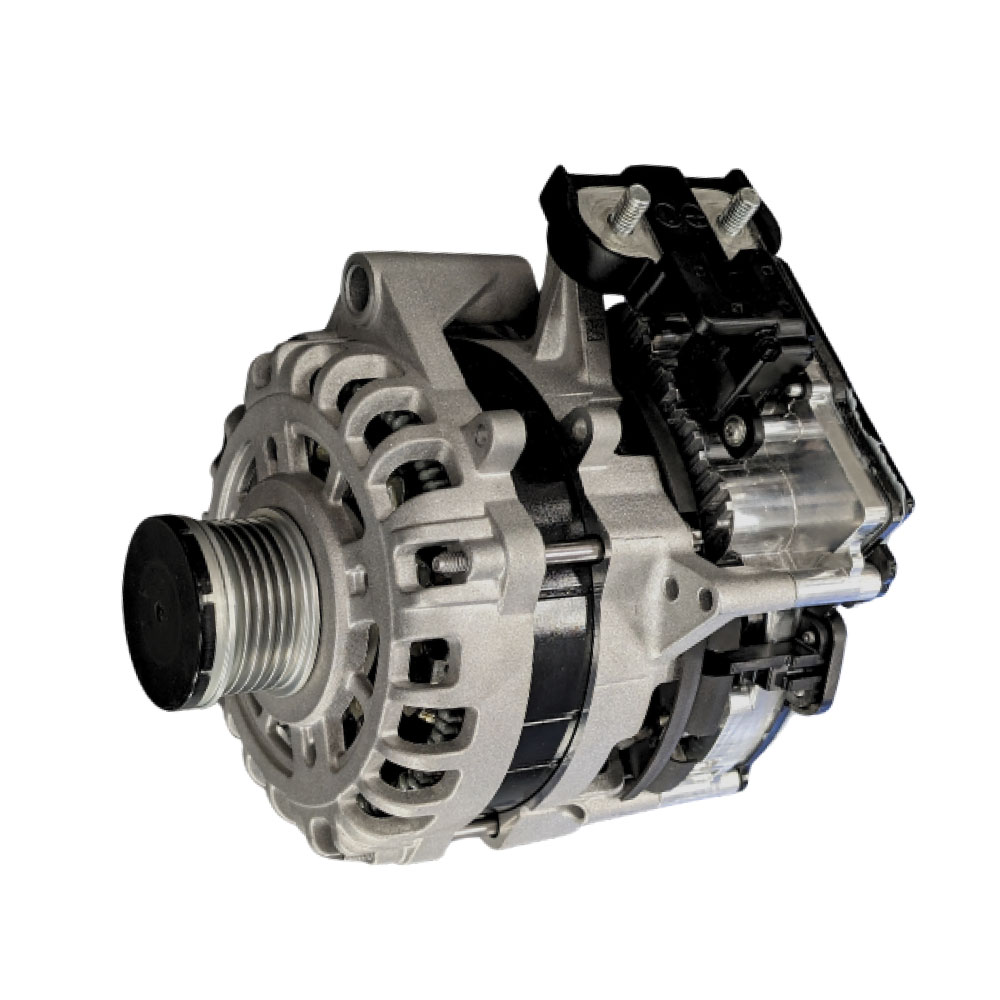
Frugal, Moderate or Bold Energy User?
A 50-55ft Catamaran with 2 people will use 10-20kWh of energy per day. This may be a combination of gas and electric. If it’s all electric as the trend is with induction cooktops and combination air fryer/ oven, then it may be closer to 20kWh of electrical energy per day.
3kW of solar in the aft region of the boat free from general sailing shadows will yield 15 -18kWh in good weather in summer.
The challenge is the 20% of the time when solar yield is poor. Fortunately when the yield is poor, the skipper may be relocating with the engines running. It’s during this time, there is opportunity to capture a ton of replenishment power.
The Secret is Rate of Replenishment Power


Maximum Power is 23kW from Two Units
Bidirectional Motor Generator
This is no ordinary alternator. If you are familiar with EV’s, their motors are synchronous with AC to DC inverter drives and run in regen mode.
This hybrid unit is based on a permanent magnet generator. However for precise control over a wide range of speeds, some field excitation is introduced.
In a brushed 48V alternator, a direct current (DC) flows through field windings on the rotor, creating the necessary magnetic field.
In this unit, permanent magnets and electromagnetic field windings are combined to generate the magnetic field. The permanent magnets provide a constant baseline magnetic flux, while the field windings, located on the stator (and NOT the rotor), allow for dynamic adjustment of the magnetic field. This design often eliminates the need for brushes and the digital inverter control changes the excitation and power output very precisely.

Comparison of BMG Technology with Alternator + Wakespeed.
| Feature | Hybrid 48V 300A Peak Permanent Magnet Alternator with Scotty AI (HESA) | Traditional 48V 130A Alternator with Wakespeed 500 remote field control. | Winner | |
| “Alternator” Type | Hybrid Excitation Synchronous Generator (permanent magnets + hairpin windings) | Field-excited rotor only | BMG | |
| Rotor Design | 16 permanent magnets + excitation windings | Field windings only | BMG | |
| Power Density | 1.65 kW/kg (advanced hairpin) | Lower due to round-wire winding | BMG | |
| IP Level | Brushless Motor: IP25. Waterproof Inverter: IP6K9K | Generally Brushed IP23 or lower | BMG | |
| Dual Stator Design | Dual three-phase, 30° shifted | Single three-phase | BMG | |
| Ripple Current Reduction | Significant (30° phase shift) | Higher ripple | BMG | |
| Noise Vibration Harshness Performance | Optimized (low ripple and torque smoothness) | Higher NVH | BMG | |
| Efficiency | Higher (permanent magnets + hairpin winding) | Lower (field-excited losses) | BMG | |
| Fault Tolerance | Dual stator allows operation in partial failure | Single stator, no redundancy | BMG | |
| Peak Generator Power | 12 kW | 6.2 kW | BMG | |
| Peak Efficiency | ≥85% | 60–70% | BMG | |
| Power at Idle (engine ~600RPM) | 3.0kW | 300-500W Typically | BMG | |
| Continuous Power Hot | ≥5.5~7.0kW kW | 5~7.0 kW | BMG | |
| Maximum Speed | 18,000 RPM | ~8,000–10,000 RPM | BMG | |
| Operating Temperature | -40°C to 105°C | -20°C to 80°C | BMG | |
| Lifetime Expected | 10 years, 300,000 km, 8,000 hrs | 5–7 years, 150,000–200,000 km | BMG | |
12V and 48V Isolation Negative side Earth isolated | Yes | No | BMG | |
| Integration with Factory 12V or 24V Alternator | Full Integration for added power as solar backup at idle | None | BMG | |
Diagnostics and Protection Of Load Dumps | Inverter/motor diagnostics, 100% load dump protection | Limited and depends on Battery | BMG | |
ISO 26262 ASIL B Automotive Safety Standard | Compliant | Not compliant | BMG | |
| Insulation Grade | Grade H (180°C) | Grade F (155°C) | BMG |


